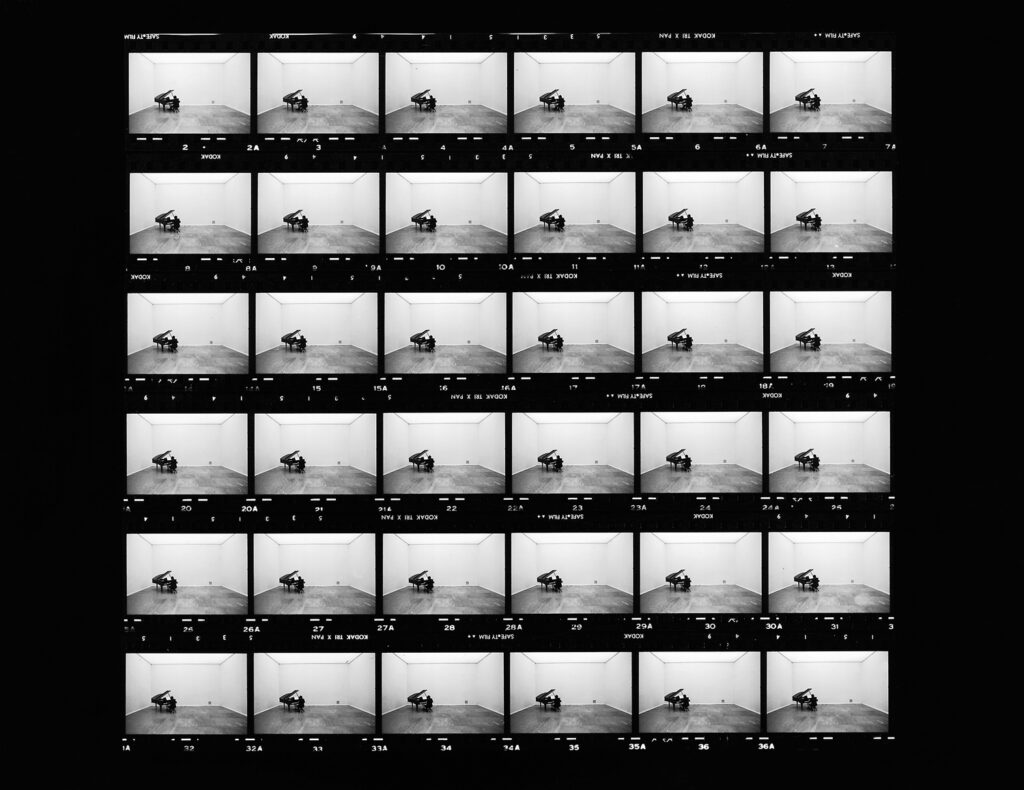3. THE TIME OF PHOTOGRAPHY. FOR JANNIS KOUNELLIS, 1970
Between the end of 1969 and the beginning of 1970, Kounellis took part in the exhibition Vitalità del negativo in
Rome. A piano was placed in a wide neutral space and, twice a day, a pianist played a partly modified piece from
Verdi’s Nabucco for several hours, the music thus becoming an obsessive motif. To take a picture of the pianist
while he was playing seemed unimportant, at most it was just a mere documentation for Kounellis. So I placed
myself on the side opposite the musician and, from that fixed position, I tried to photograph the hall. My intention
was
to convey the feeling of obsession produced by the recurrence of the music as well as the sense of the musical
time which is antithetical to the photographic time. Photo after photo, while the image remained motionless,
because I remained in the same place, and the pianist’s movements were so small in such a large space they were
hardly perceptible; the music kept coming and going, closing me within a kind of circle. The result was an entire roll
of thirty-six almost identical photograms. There are thirty-six of them not owing to my choosing, but because
a full roll is made up of thirty-six shots. In the contact print the numbers on the edge of the film follow one another
along the still image: if not for their presence, you might think these were thirty-six repeated photos.
The only thing that changes are the numbers: not a convenient sequence but a linguistic reality. Time, that is,
acquires an abstract dimension. In photography it does not run naturally, as it does in cinema and literature:
different times are
simultaneously present on the same sheet, in the same moment, apart from any concrete observation. This
stillness is more effective than any actual movement, it is the obsession of the repeated image that makes the
dimension of photographic time come out.
